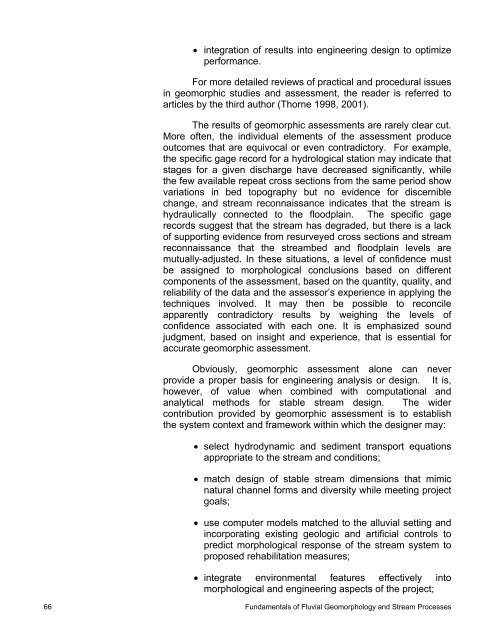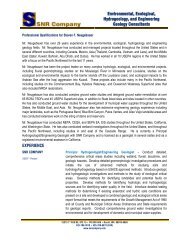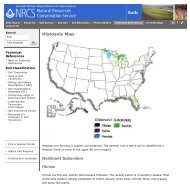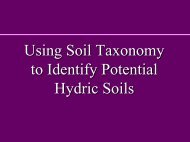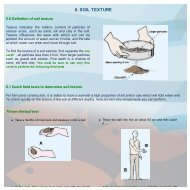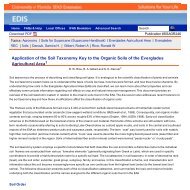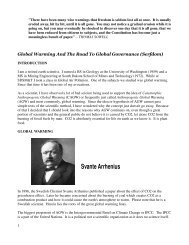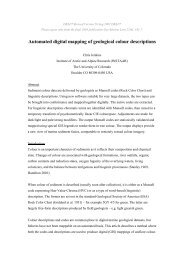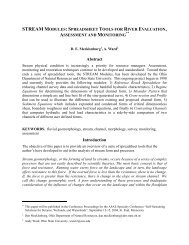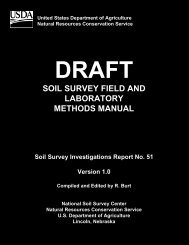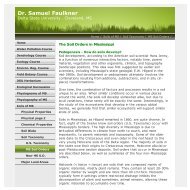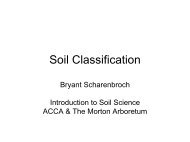chapter 3 fundamentals of fluvial geomorphology and stream ...
chapter 3 fundamentals of fluvial geomorphology and stream ...
chapter 3 fundamentals of fluvial geomorphology and stream ...
Create successful ePaper yourself
Turn your PDF publications into a flip-book with our unique Google optimized e-Paper software.
• integration <strong>of</strong> results into engineering design to optimizeperformance.For more detailed reviews <strong>of</strong> practical <strong>and</strong> procedural issuesin geomorphic studies <strong>and</strong> assessment, the reader is referred toarticles by the third author (Thorne 1998, 2001).The results <strong>of</strong> geomorphic assessments are rarely clear cut.More <strong>of</strong>ten, the individual elements <strong>of</strong> the assessment produceoutcomes that are equivocal or even contradictory. For example,the specific gage record for a hydrological station may indicate thatstages for a given discharge have decreased significantly, whilethe few available repeat cross sections from the same period showvariations in bed topography but no evidence for discerniblechange, <strong>and</strong> <strong>stream</strong> reconnaissance indicates that the <strong>stream</strong> ishydraulically connected to the floodplain. The specific gagerecords suggest that the <strong>stream</strong> has degraded, but there is a lack<strong>of</strong> supporting evidence from resurveyed cross sections <strong>and</strong> <strong>stream</strong>reconnaissance that the <strong>stream</strong>bed <strong>and</strong> floodplain levels aremutually-adjusted. In these situations, a level <strong>of</strong> confidence mustbe assigned to morphological conclusions based on differentcomponents <strong>of</strong> the assessment, based on the quantity, quality, <strong>and</strong>reliability <strong>of</strong> the data <strong>and</strong> the assessor’s experience in applying thetechniques involved. It may then be possible to reconcileapparently contradictory results by weighing the levels <strong>of</strong>confidence associated with each one. It is emphasized soundjudgment, based on insight <strong>and</strong> experience, that is essential foraccurate geomorphic assessment.Obviously, geomorphic assessment alone can neverprovide a proper basis for engineering analysis or design. It is,however, <strong>of</strong> value when combined with computational <strong>and</strong>analytical methods for stable <strong>stream</strong> design. The widercontribution provided by geomorphic assessment is to establishthe system context <strong>and</strong> framework within which the designer may:• select hydrodynamic <strong>and</strong> sediment transport equationsappropriate to the <strong>stream</strong> <strong>and</strong> conditions;• match design <strong>of</strong> stable <strong>stream</strong> dimensions that mimicnatural channel forms <strong>and</strong> diversity while meeting projectgoals;• use computer models matched to the alluvial setting <strong>and</strong>incorporating existing geologic <strong>and</strong> artificial controls topredict morphological response <strong>of</strong> the <strong>stream</strong> system toproposed rehabilitation measures;• integrate environmental features effectively intomorphological <strong>and</strong> engineering aspects <strong>of</strong> the project;66 Fundamentals <strong>of</strong> Fluvial Geomorphology <strong>and</strong> Stream Processes


